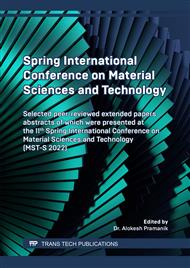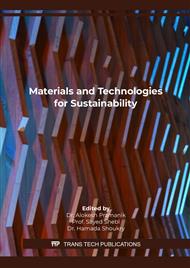[1]
Frazier WE. Metal additive manufacturing: a review. Mater. Eng. Perform, 2014, 23 (6):1917–(1928).
Google Scholar
[2]
B. Song, X. Zhao, S. Li,et-al. Differences in microstructure and properties between selective laser melting and traditional manufacturing for fabrication of metal parts: a review, Front. Mech. Eng. 10 (2) (2015) 111–125.
DOI: 10.1007/s11465-015-0341-2
Google Scholar
[3]
HopkinsonN, Hague RJM, Dickens PM, editors. Rapidmanufacturing: anindustrial revolution for the digital age. Chichester: JohnWiley & Sons, Ltd.; (2006).
Google Scholar
[4]
Han P. Additive design and manufacturing of jet engine parts. Engineering 2017; 3(5):648–652.
DOI: 10.1016/j.eng.2017.05.017
Google Scholar
[5]
Lu B, Li D, Tian X. Development trends in additive manufacturing and 3D printing. Engineering 2015;1(1):85–89.
Google Scholar
[6]
An J, Teoh JEM, Suntornnond R, Chua CK. Design and 3D printing of scaffolds and tissues. Engineering 2015;1(2):261–268.
DOI: 10.15302/j-eng-2015061
Google Scholar
[7]
Lee AY, An J, Chua CK. Two-way 4D printing: a review on the reversibility of 3D-printed shape memory. Engineering 2017; 3(5): 663–674.
DOI: 10.1016/j.eng.2017.05.014
Google Scholar
[8]
ZHU J H, ZHOU H, WANG C, etal.Status and Future of Topology Optimization for Additive Manufacturing. Aeronautical Manufacturing Technology, 2020, 63(10): 24-38.
Google Scholar
[9]
WANG Y, LI S S, YU Y. Structure Design and Process Planning for Additive Manufacturing. Journal of Tongji University(Natural Science), 2020, 48(6): 869-879.
Google Scholar
[10]
The LEAP fuel nozzle[EB/OL].[2019-05-01]. https//www.ge.com/additive/industry/aerospace.
Google Scholar
[11]
LEI L M, HOU H P, HE Y L, et-al.Application and Challenges of Metal Additive Manufacturing in Civil Aviation. Aeronautical Manufacturing Technology, 2019, 62(21): 22–30.
Google Scholar
[12]
CHANG K, LIANG E Q, ZHANG R, et-al.Status of Metal Additive Manufacturing and Its Application Research in the Field of Civil Aviation. Materials Reports. 2021, 35(3):03176-03182.
Google Scholar
[13]
XIE Y, HUANG X. Evolutionary Topology Optimization of Continuum Structures Methods and Applications: John Wiley & Sons Ltd, (2010).
Google Scholar
[14]
Dawei Ma, Wenbin Zhang, Guofang Liu.Research on Forming Quality of AlSi10Mg Powder for SLM Process. Spring International Conference on Material Sciences and Technology, 91-99,April, (2019).
Google Scholar



